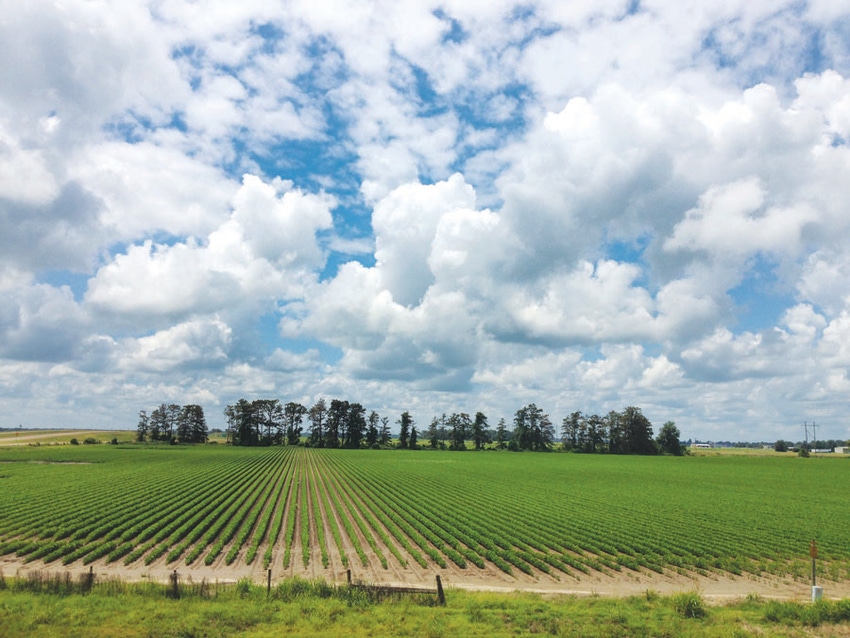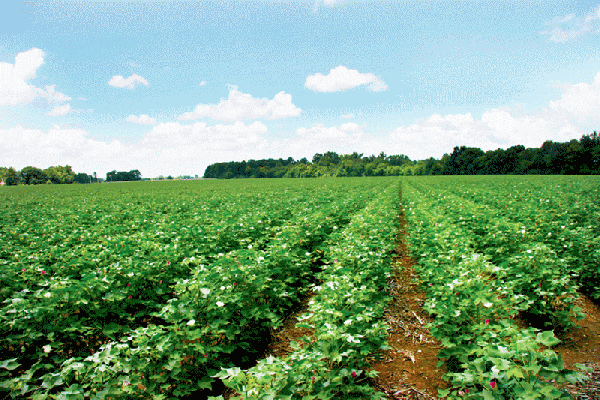
The value of lower quality farmland is expected to continue to decline this year, with high quality land holding steady, according to a January report from Farmers National Company, a nationwide farm/ranch real estate company.
But despite lower land values across many regions, values in general will remain historically high, says Randy Dickhut, vice president of real estate operations.
And the report says, statistics indicate positive long term economic trends, even with the current softening of agricultural land values, and the current land value trend may encourage new buyers to enter the market or existing investors to expand their holdings.
IT’S FREE! Stay informed on what’s happening in Mid-South agriculture: Subscribe to Delta Farm Press Daily.

Land values in Mississippi, Arkansas, Tennessee, Missouri, Kentucky, Indiana, Ohio, and Michigan are lower than those of the last couple of years, but sporadic high priced sales of high quality land make up for that slight decline.
“Lower grain and livestock prices are a major factor in the current measured decline in land values,” Dickhut says. “As net farm income continues fall from the 2013 peak, we expect to see this trend in many agricultural regions of the country.”
Price stabilization will continue into 2016 for some regions, he says, as landowners hold on to high value land. The supply of land available for sale increased slightly during the last quarter of 2015, but has remained lower than normal, and the demand for agricultural land “has turned more cautious.”
But, he says, “Values remain much higher than just five to seven years ago, due to the positive long term demand for food and fiber.”
Looking at regional trends, land values in Mississippi, Arkansas, Tennessee, Missouri, Kentucky, Indiana, Ohio, and Michigan are lower than those of the last couple of years, says Roger Hayworth, Farmers National area sales manager. “But sporadic high priced sales of high quality land make up for that slight decline.
“Values are down 7 percent to 10 percent from six months ago. The majority of land is still being bought by local landowners and farmers looking to add another 80 acres to 100 acres.”
If high quality land is for sale in a popular area, Hayworth says, “there will be a lot of local competition, especially if that land hasn’t changed hands in 50 years or 60 years, and especially by neighboring farmers looking to expand. If it has been well-maintained, with proper drainage, tiling, and/or new irrigation equipment, then it sells well. Buyers will pay a premium to get acres in an area they really want.”
Fewer buyers for marginal land
If commodity prices don’t increase this year, he says, “there likely will be another slide in land values toward the end of the year. With grain prices down, farm operators have less to spend on land. They will pay up for quality acres, but marginal B or C land is not highly sought after, and there are fewer aggressive buyers for those acres. Their values can be down 10 percent to 20 percent.”
But, Hayworth says, land values still are historically high compared to several years ago. “Seven or eight years ago, there was a spike off the charts. Some properties in Indiana that had been valued at $3,500 to $5,000 per acre sold as high as $11,000 to $12,000 per acre. But now they’re down to $8,500 to $10,000 per acre. That’s still very strong.”
Decreased profit margins have softened the real estate market as increased cash rents, equipment costs, land costs, and operational costs have pushed inputs higher and land values lower, says Brock Thurman, Farmers National vice president and area sales manager.
“Operators want to control acres,” he says. “They’re willing to pay steady cash rents to continue to work and control their land. Local demand is always strong for high quality land.”
Investors continue to seek opportunities in local land markets, Thurman says, but only if they can justify the cost in comparison to the return. “Those returns have been squeezed because input costs haven’t adjusted relative to commodity prices. If an investor can see a return on investment of 3 percent to 5 percent, then they’ll be interested. But they likely would be outbid by local operators continuing to expand.”
Read the full report here.
About the Author(s)
You May Also Like




